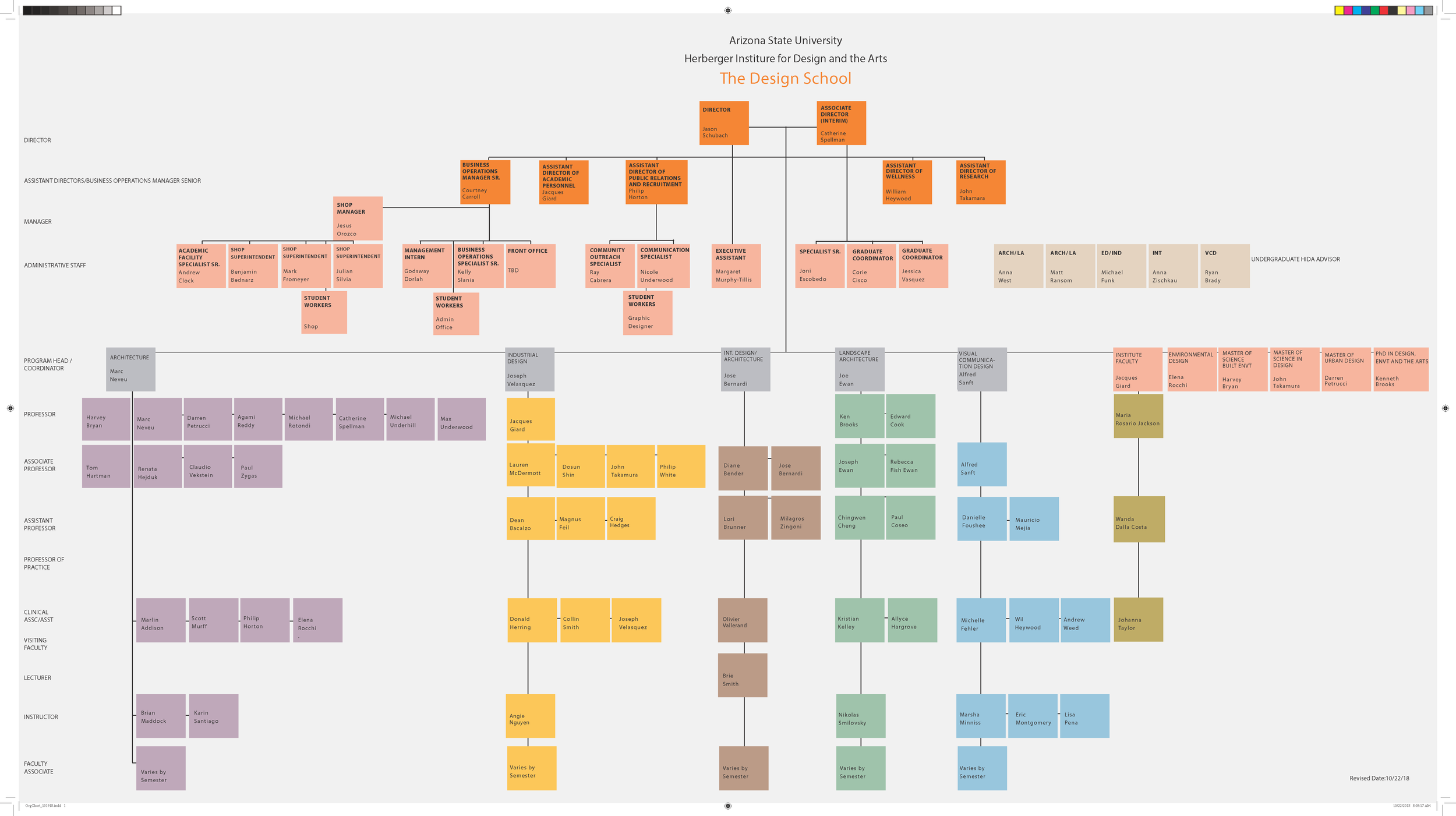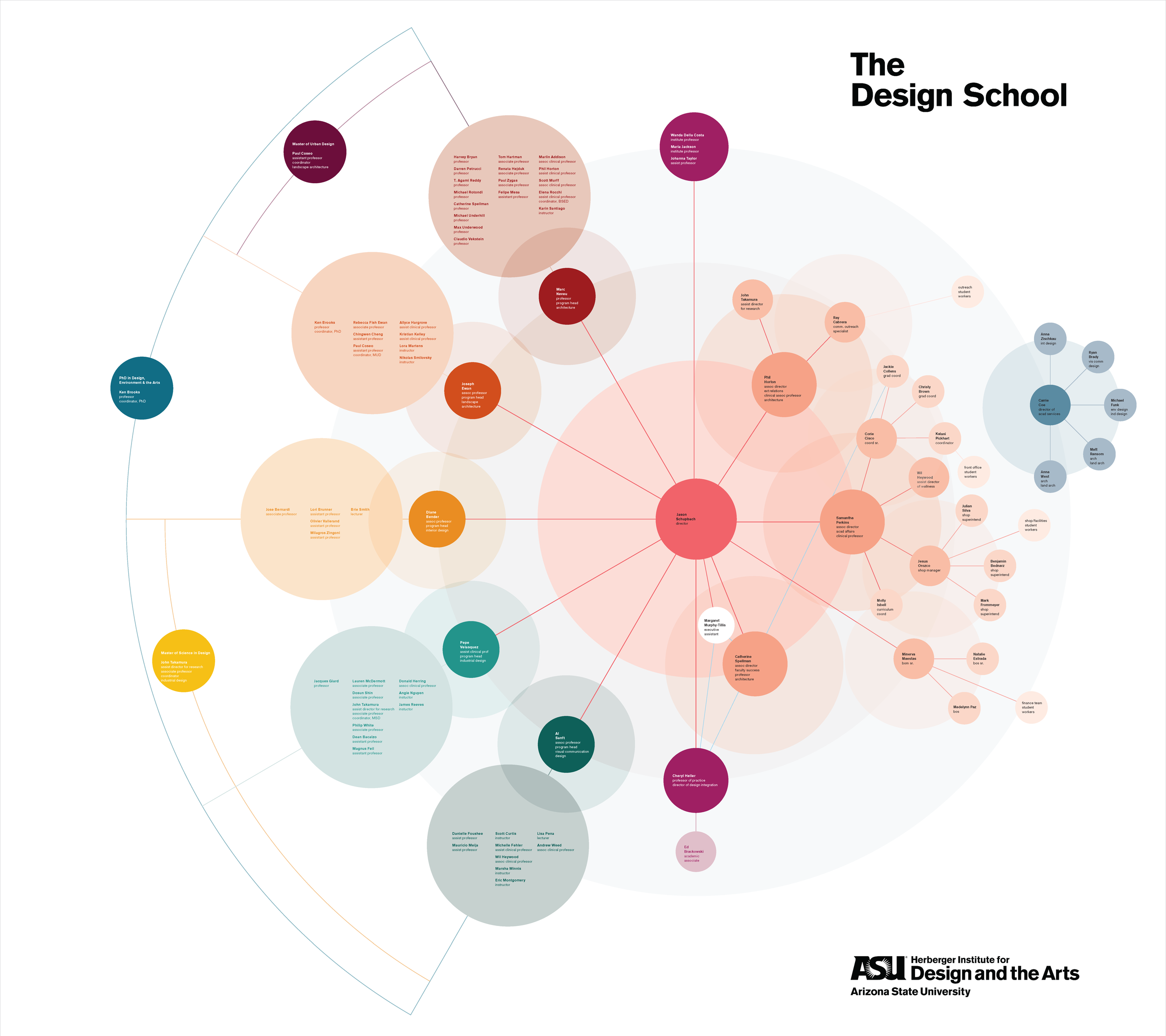THE ORG
what: organization chart
for: The Design School, Arizona State University
As I began my work at The Design School, learning my way around the systems and structure, I realized the standard form of organization did not apply. Our organization chart, at that time (see first image), consisted of a standard top-down hierarchical layout, designed to place the director above everyone, defining strict chains of communication that worked counter to the personality of that director and the mission of the School. The director wanted to be and wanted to establish the School as a hub for the community. Hierarchy still played in, but only in terms of who reported to who, and where to go for specific answers.
To express this idea, I developed a new organizational structure, built on the idea of slime mold. Ugly name, but a perfect analogy.
Slime mold generates from a series of individual entities that band together to grow toward and share resources. No one part of the colony relies entirely on the rest, yet all work together to thrive in challenging circumstances.
The resulting graphic places the director at the center of the organization, not the top, with all other departments and programs growing out from there. There are layers of interaction between departments, indicated by the lighter circle background colors. And the overall hierarchy is lessened, creating a sense of equality between programs and faculty, regardless of rank.
original TDS organization chart—a top-down ranking of most to least important
finalized organization chart, showing relationships between School partners
detail of leadership and staff relations
detail of leadership and program relations




